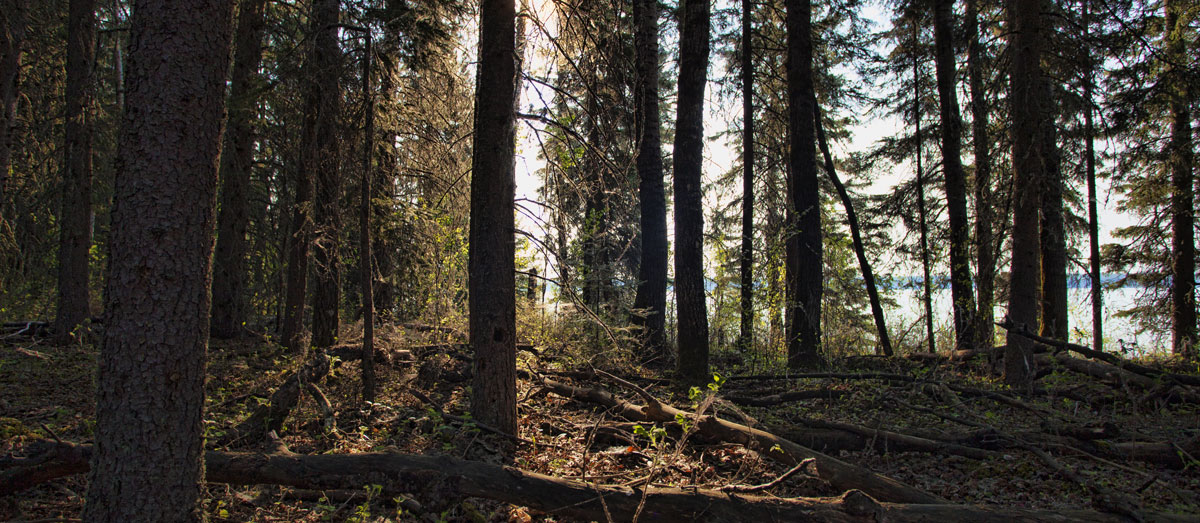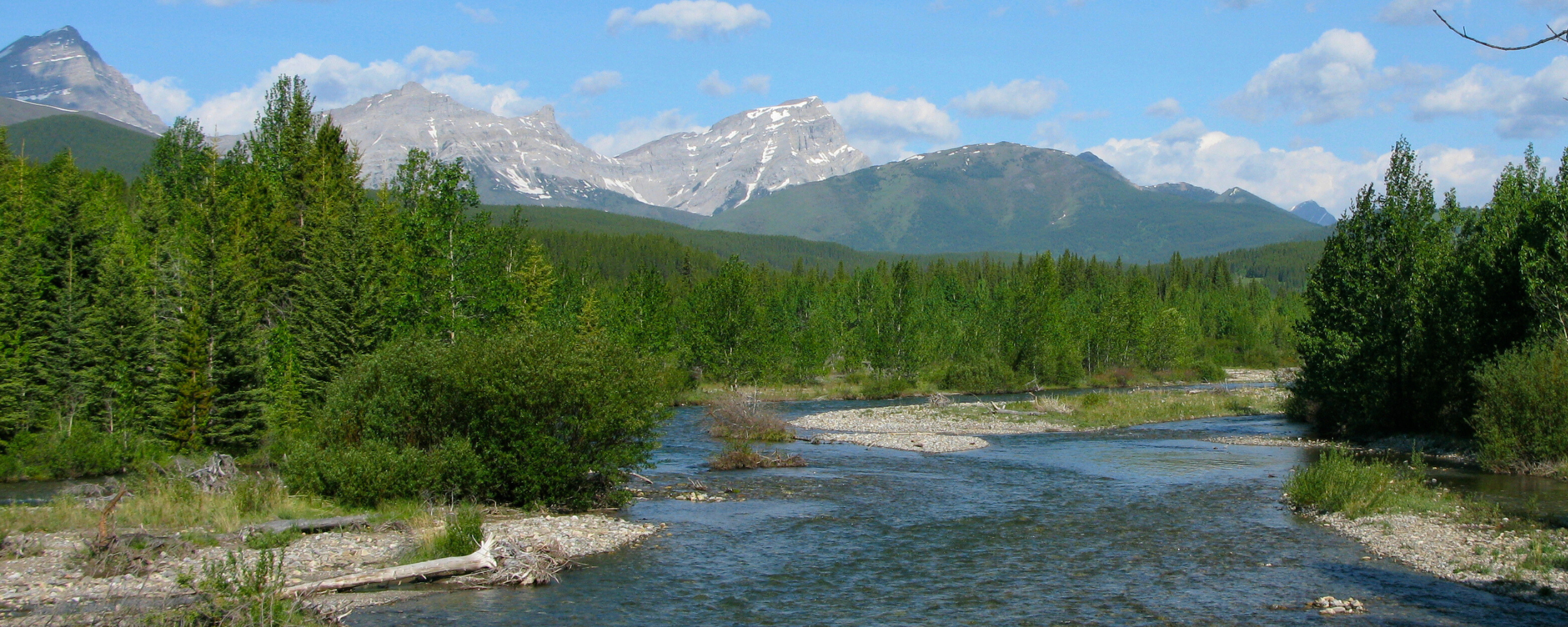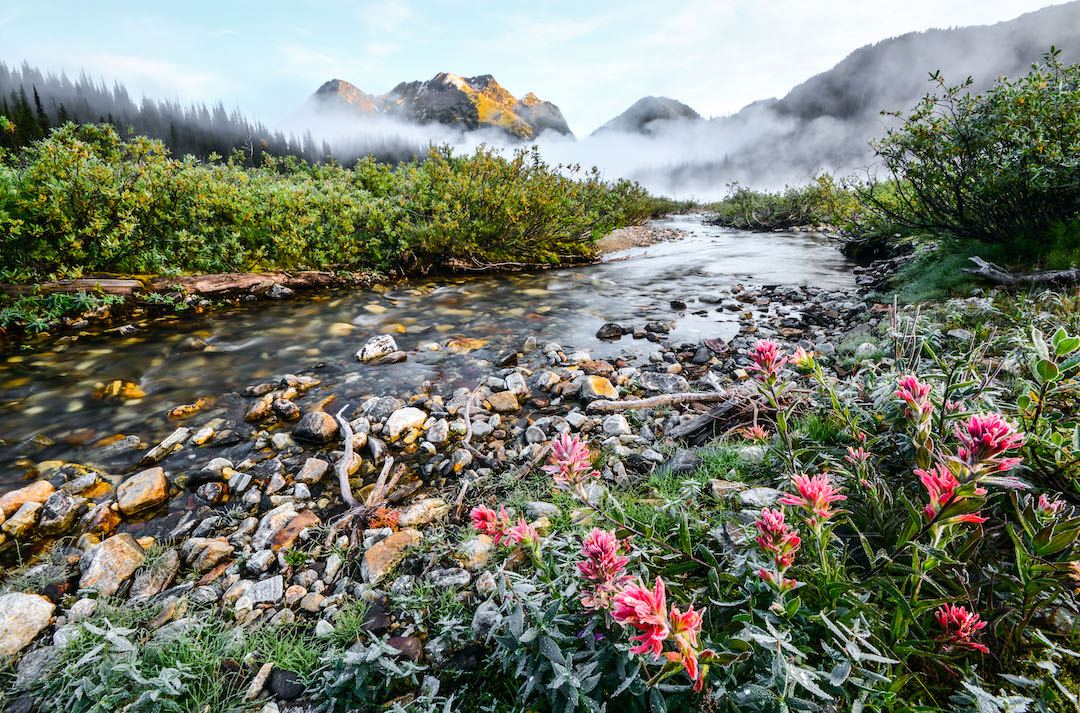By Christina Scott

When I was eight, I ventured barefoot into a grove of trees behind my parents’ house in southern Saskatchewan. It was a sunny July day, and my mom had ordered me outside so she could take a much-needed break from the daily grind of raising four kids. I didn’t mind, though, because I had always been fond of the outdoors. If the weather was warm, I was basking in the great wide open, exploring whatever nature had to offer that day.
On this particular day in 1996, I made my way to the grove as I had done many times, with my loyal dog Pinto next to me. When I arrived, I marveled at how the sun sparkled on the tall, white trunks of the birch trees, and then cascaded down towards the brown earth, lighting up even the darkest shades.
As I ventured in deeper, something changed. As my mother would tell me many years later (I don’t recall this myself), my dog must have sensed danger somewhere along the way and began to lay down directly in front of me, not allowing me to get around him. To my great frustration (my mother told me I came home from the incident in quite a huff), he refused to let me continue my adventure.
Now, dogs are commonly protective of their humans; this is no oddity. But animals are incredibly smart, empathetic, and intuitive. Therefore, I believe, in some way my, dog knew I had a disability, and that taking my manual wheelchair over rough terrain was not a good idea. Good boy, Pinto!
I was born with cerebral palsy, a condition which affects motor function and movement, caused by a lack of oxygen to the brain before, during, or after birth. The brain damage which occurs results in cerebral palsy, or CP. CP affects everyone differently, depending on the area of the brain that has been damaged, and will often go undiagnosed until age one or two when symptoms occur (i.e., missing typical milestones such as walking or talking). In my case:
Walking: that’s a big fat X. During my early years, I belly crawled everywhere I went. I held the record for the world’s gnarliest rug burns until I was able to get my first wheelchair at age three.
Talking: check. I started speaking full phrases at 18 months, and I’ve never actually been able to shut up since.
Jokes aside, although my CP is considered severe, I feel extremely lucky that my limitations are merely physical, leaving my brain in fine, sassy form. That said, I realized from an early age that being wheelchair-bound was going to be a defining, sometimes glaring, factor in shaping all of my life experiences, whether I liked it or not.
So, what did that mean for my inner starry-eyed nature-lover? Well, it meant that if I wanted to feel connected to my environment, I needed to build up strength, stamina, and a lot of creativity. That’s the great thing about being a wheelchair user: having to propel myself to get anywhere and everywhere resulted in some major muscles, allowing me to explore various outdoor terrains including grass, gravel, dirt, mud, and the Shell station down the street for the occasional Slurpee. Nothing was going to get in my way.
As a child, I had great experiences visiting my aunt and uncle’s farm, venturing to the barn to watch cows being milked, chicks hatching, and the occasional deer rescue. My cousin and I would venture down one of the farm’s gravel roads to the garden, where we would pick as many vegetables as our arms could carry, hauling them back to the house for supper that evening. I remember being entranced by country sunrises and sunsets, often finding a quiet clearing to take it all in and just be thankful.
When I reached my 20s, I got married and my husband and I began to travel. We explored southern Alberta and beyond, witnessing extreme beauty in the Rockies, Vancouver, the Okanagan and the Yukon. We were also fortunate to travel to Mexico and overseas to Britain and the Mediterranean. While these experiences were wonderful, traveling with a disability can often be difficult (as I discovered on my first visit to Mexico when I realized there was no way I could visit the ocean or the beach in my wheelchair).
But I was determined to keep doing, exploring, and pushing my limits. At 22, I felt the wind in my hair as I roared through Cabo San Lucas backcountry on an ATV; at 24, I admired the beauty of Venice from one of its many bridges; at 26, I was pushed off a platform in Whistler to fly down Canada’s longest zipline; and, at 28, I finally accessed the beaches and oceans of Puerto Vallarta thanks to two wonderful women and their company specializing in beach wheelchairs.
And yet, as much as I felt connected to mother earth through all my amazing experiences, I knew pieces of the puzzle were missing. Regardless of my resolve to conquer the outdoors, my deepest dreams remained beyond reach: I couldn’t strap on gear and hike up a mountain to a breathtaking lookout; I was unable to explore tall, ancient forests with their mossy landscapes and earthy scents; the water could never splash against my body as I kayaked a crystal-clear lake. These were things I told myself I would just have to accept, and to just be grateful for everything I had experienced instead.
In 2020, I saw an advertisement on social media for Adaptable Outdoors, a Pincher Creek-based, non-profit society dedicated to providing opportunities for people living with disabilities to experience the benefits of outdoor recreation. Upon visiting their website, my heart swelled with excitement as I realized there were opportunities to participate in adaptive hiking and kayaking, just what I’d always dreamed of doing!
I contacted them immediately, signing up for a morning kayak session at Beauvais Lake. Upon arrival, I was an excited, jittery bundle of nerves, unsure of what to expect. Well, the Adaptable Outdoors team made every effort to provide me an experience that was safe, comfortable, and incredibly fulfilling. They had no problem lifting me into the kayak, adjusting the adaptive seating so that I felt fully supported, and showing me how to work the paddle with ease. The three hours I spent on the water that day were incredibly exciting, therapeutic and emotional. Just being able to put my hands in the water, and feel it on my skin was a magical, full-circle moment.
The following year, Adaptable Outdoors made my forest hiking fantasy possible thanks to a special TrailRider that easily moves through rugged terrain. On a rainy June day, I sat with my mouth agape as we hiked Castle Park’s syncline trails for three hours through tall trees, wild flowers, and lake lookouts. After years of dreaming, I couldn’t believe I was here, so deep in the sights, sounds and scents of nature. My dreams were coming true right before my eyes, and in those moments, it seemed like anything was possible, and that my disability did not exist. That freedom is priceless.
I have always believed that Earth, the environment, and nature are rare and precious gifts that we as a society must do everything in our power to protect and respectfully enjoy. I plan to continue doing that to the best of my ability. I recently learned of an opportunity to try adaptive water-skiing; I’m not sure if my sassy self is brave enough for that yet, but it’s nice to know that when I’m ready for my next adventure, it will be waiting for me, just over the horizon.
More Blog Posts

Speak Up, Write Out: The Power of a Local Op-Ed

Fine Issued to Forestry Operator for Erosion Control Failures


